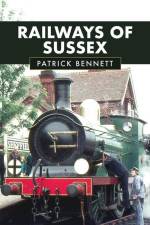- The Life and Hard Times of Edward Anderson
av Patrick Bennett
285,-
Times were tough in the thirties, and tough guys chronicled the era in newspapers, short stories, and novels in prose that was terse, hard-boiled, bleak. One such writer was a Texan named Edward Anderson. Rough and Rowdy Ways is the story of Edward Anderson, primarily in what were, ironically, his golden years--the Great Depression. The laconic loner hopped freights, wrote two proletarian novels of the social underclass, looked for inspiration in a shot glass, and mixed with Hollywood celebrities while employed as a screenwriter for Paramount Pictures and Warner Brothers. When the thirties ended, the hard-times storytelling that was Anderson's genius went out of style, and his family suffered the effects of his rejection slips, unemployment, and alcoholism. Attracted to theoretical aspects of fascism, anti-Semitism, and Swedenborgianism, Anderson became an eccentric unpopular among intellectuals as well as the poor folk whose plight he had sketched too well in prose. He died in Brownsville, Texas, in 1969, leaving a legacy of shattered relationships and two whole, well-crafted novels of a distinctive literary genre and historical era













